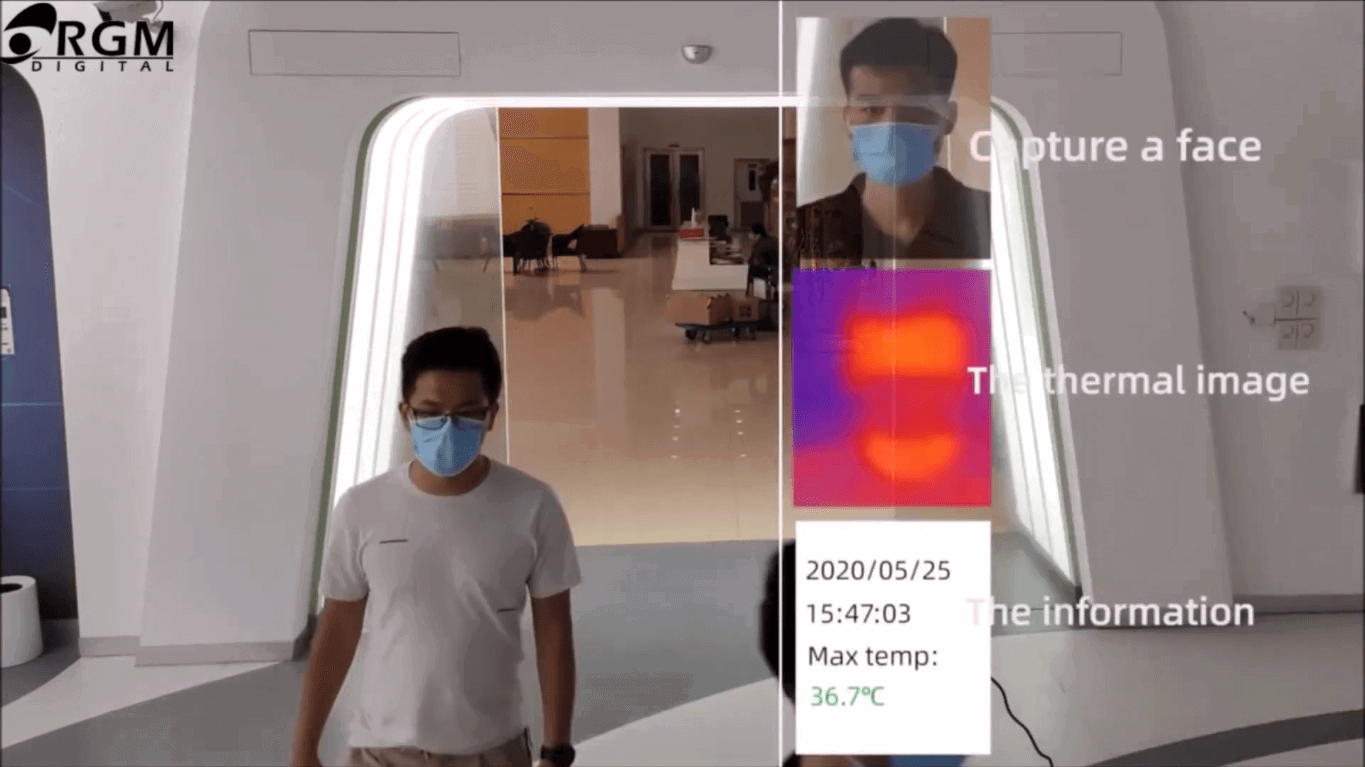The Importance of Thermal Detection Technology in a Post-COVID Society

The world has come to standstill due to the impact of the COVID-19 pandemic. Life as we know has changed seemingly overnight, with the shutting down of businesses, closing down of borders and other preventative methods. The lack of complete information only contributed to the fears, and compelled companies to implement social distancing methods to slow down the spreading of the virus as much as possible. Now that the world has gotten used to living in a post COVID society, it is important to implement and get comfortable with the new way of life that requires technology which can isolated potentially infected individuals and sanitise non-infected ones.

To limit the spread of the highly contagious COVID-19 virus, many businesses across the globe have deployed social distancing requirements, stringent cleaning protocols and capacity limitations as part of their plan to safely reopen. Even with these measures in place, retailers, office complexes and educational facilities are recognising that technology will also play a critical role to help identify individuals who may have the virus even before that person enters the premises.
This is where thermal imaging camera systems play a pivotal role, with casinos, retailers and manufacturing facilities among the first to invest in and deploy this solution to help them to proactively detect an elevated temperature in visitors or employees prior to entry. Many more businesses are expected to follow suit in the coming weeks and months, as they look for additional measures to reduce the spread of the virus and to safely reopen in a COVID-19 world.
Thermal surveillance has been part of the traditional physical security and outdoor perimeter detection portfolio for years. These surveillance systems work by picking up heat emitted by an object or a person and can detect vehicles or individuals in a predetermined area. It is especially useful in the dark, when a traditional surveillance system might be limited in its detection capabilities due to limited light sources. With the spread of COVID-19, the security industry quickly began to look at how security solutions, and specifically thermal imaging cameras systems, could be leveraged as part of the reopening plan for businesses and schools.
Thermal imaging camera systems with a blackbody temperature calibration device offer a more accurate solution that also provides a higher throughput of people for scanning, as well as the ability to locally and remotely monitor and manage alerts. They also integrate with other technologies, such as a turnstiles, physical access control systems and intrusion devices. The combination makes this type of solution ideal for facilities that require a first line of defense in high traffic areas or when rapid people flow is essential - commercial office buildings during morning rush hour, transit stations or manufacturing plants during shift changes.
Systems that incorporate a blackbody device typically employ a dual sensor camera, which has a visual sensor and a thermal sensor built into the camera, along with a separate blackbody device. The blackbody device is an integral part of thermal imaging as it relates to detecting elevated skin temperature scanning as it provides the ongoing calibration of the infrared temperature sensor for a higher degree of accuracy. It also helps maintain thermal equilibrium through its management of radiation while providing a near-perfect temperature source, preventing the temperature readings from being influenced by a common issue of thermal sensors called drift.
Access control is also an important consideration for businesses to take into account. Achieving effective access control, through a turnstile or a busy main entry door with card reader, requires a single person at a time to be able to walk through without stopping. To ensure a high level of accuracy and to maintain proper resolutions with a thermal imaging camera system, an interval of two to four seconds between each person is required. Depending on how many people need to be processed, elevated skin detection cameras can be deployed at multiple lanes to accommodate anticipated traffic – between 15 and a maximum of 30 individuals per minute can be processed by a camera-black body pair while achieving medical grade accuracy in line with IEC 80601-2-59:2017 standards when using compliant devices and proper installation.
Systems that provide a variety of alerting capabilities can provide a high level of flexibility for organisations incorporating elevated skin temperature into their new health and safety operations. While a vast majority of users will deploy a thermal solution with local monitoring, alerting and response, some systems also feature integrations with video management systems for remote monitoring and management. VMS integration can also prove a valuable tool for automated contagion reporting for contact tracing, controlling access through the VMS and PACS integration and activating an organisation's event response protocols. For local monitoring and response, some thermal imaging cameras may include a built-in speaker for configurable audible alerts. These alerts can be customised in response to detecting a temperature variation beyond the norm. The audible alert can announce or alert that a temperature alert has been detected and instruct an individual to proceed to a second scanning area or to stay in place while the appropriate person responds.
Installing thermal imaging cameras for scanning elevated skin temperatures will soon become the new normal as more and more companies migrate back to the workplace. Businesses should follow best practices with the installation, deployment and usage following standards of these devices, to achieve the optimal success and the best possible accuracy in elevated skin temperature scanning. RGM Digital is committed to the development of the most capable and accurate thermal detection technology on the market in order to comply with the constantly changing standards that need to be met in order to assure the safety of the general public in a post COVID society.
You can learn more about our thermal detection solutions by visiting our Thermal Detection page.